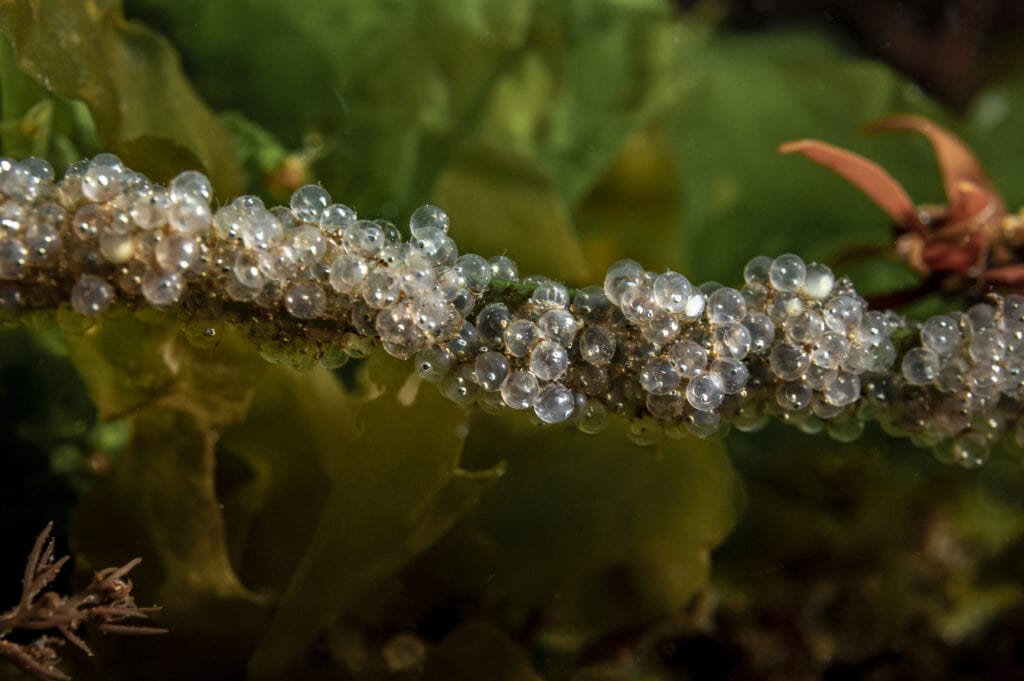Pacific herring are the dominant forage fish in the Salish Sea and are of critical importance to Pacific salmon populations.
Herring constitute the majority of adult Strait of Georgia Chinook and Coho salmon diets. They are also important prey for seals and other marine predators, buffering the impacts of these predators on juvenile Pacific salmon of all species. Consumption of juvenile herring supports accelerated growth of juvenile Chinook and coho salmon, a critical role given growing evidence for linkages between early marine growth, marine survival, and population productivity. The Salish Sea Marine Survival Project provided substantial evidence for these links between herring availability and salmon growth and survival. This project seeks to build on these results to address several outstanding knowledge gaps including what factors impact the availability of juvenile and adult herring to Pacific salmon; the quality and usage of spawn habitat; and the health and structure of Strait of Georgia herring populations. The project is led by PSF along with academic and First Nation partners.
Key components of the project are program co-development and capacity building within Strait of Georgia First Nations, particularly with respect to utilization of novel technologies such as small vessel-based hydroacoustic units. Our study area will include the Strait of Georgia including the Gulf Islands, and mainland coast and inlets. Our work will contribute to a more complete understanding of the food web that supports Pacific salmon, benefiting salmon survival while building capacity among First Nations communities.
There are four primary activities within the project:
- Interactions between age-0 herring and juvenile Chinook and coho salmon
- Biomass assessment and otolith-based detection of adult non-migratory herring in the Strait of Georgia
- Herring spawn habitat: gap analysis, characterization and assessment of anthropogenic stressors
- Herring traditional ecological knowledge from First Nations in the Strait of Georgia

Eggs of the Pacific herring, Clupea pallasii, laid on a frond of Eel grass in the intertidal zone. The developing embryos are ten days old at this point and are quite visible. Photo credit: Eiko Jones
Funding for this project is provided by the BC Salmon Restoration and Innovation Fund, a contribution program funded jointly between Fisheries and Oceans Canada and the Province of BC.

